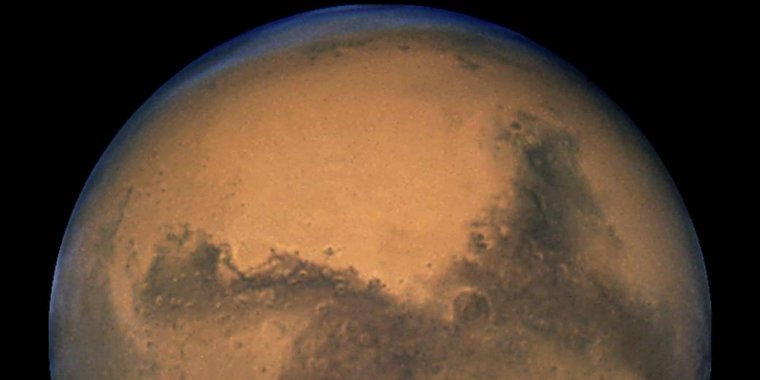| News / Space News |
Red Planet May Have Harbored Life in Past
Scientists have found traces of fatty acids - key building blocks of biological cells - in acidic streams in the UK, which they say hint that life may once have existed on Mars.

Mars may have harbored life in past. ![]()
The researchers from Imperial College London in the UK concluded that there could be nearly 12,000 Olympic sized pools of organic matter on Mars that could represent traces of past life. "Mars harboured water billions of years ago, meaning some form of life might have thrived there," said Mark Sephton, Head of Imperial's Department of Earth Science & Engineering.
"If life existed before the water dried up, it would probably have left remains that are preserved to this day in martian rock," said Sephton. Dorset in the UK is home to highly acidic sulphur streams that host bacteria which thrive in extreme conditions.
One such environment, in St Oswald's Bay, mimics the conditions on Mars billions of years ago. The researchers treated the landscape as a template for Mars and examined the organic matter preserved in rock deposits nearby.
The iron-rich mineral goethite transforms to hematite which is very common on Mars and gives the planet its red colour. If these iron-rich minerals harbour traces of life on Earth, then they may hold clues to past microbial life on the red planet. The study found that goethite in St Oswald's Bay hosted many microbes as well as traces of their fossilised organic remains.
The researchers applied these results to a martian environment. Based on how much rock is from acid environments on Mars, and assuming the concentration of fatty acids found in martian sediments matches that of Earth, there might be up to 2.86 1010 kg of fatty acids preserved within martian rock -equivalent to nearly 12,000 Olympic-size pools.
Previous missions have used heat to inspect rock for the presence of organic matter.
Scientists suspect the heat might have caused minerals to react with any organic matter, explaining why we have not yet found traces of life. However, heating goethite or hematite does not destroy any organic matter that is there, meaning these minerals could be good life-search targets. (Tasnim News Agency)
YOU MAY ALSO LIKE

